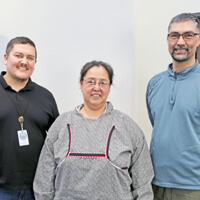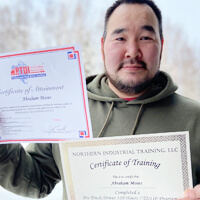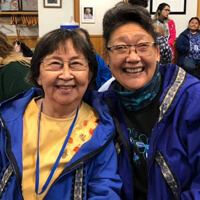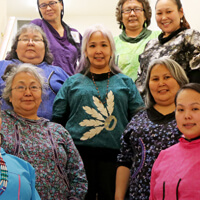As original landowners, Alaska Natives have endured countless obstacles and challenges in retaining their rights of ownership and access to the ancestral land that has sustained them for generations.

Some federal restrictions were included as a condition of the transfer of land. These provisions, including environmental and preservation policies, can hinder or complicate otherwise routine real estate or property matters. AVCP remains a staunch advocate and supporter of our region’s Native land rights and the individual rights of landowners. Through the AVCP Realty Department, our team is able to assist tribal members.
AVCP realty services are limited to native allotments and exclude ANCSA lands and private real estate property. The types of realty transactions our team supports include:


Gift Deeds

Invalid Conveyance

Land Exchanges

Mortgages

Partitions

Revocable Use Permits

Rights-of-Way

Lease

Sales

Subdivisions

Trespassing
• Improvements: any structure placed on restricted land (even if it’s only a few inches).
• Removal of Natural Resources: the removal of timber, firewood, gravel, sand or other minerals.
• Easements: roads, trails, footpaths, telephone lines, electric lines, pipelines, water and sewer and other utilities. NOTE: If the easement is not reserved in the title document it may very likely be a trespass, although this is not always the case.
• Subsistence: hunting, fishing, trapping, berry picking, or other food gathering activities.
• Recreational Use: picnics, camping, or any other recreational uses.
• Excavating, Dredging or Filling: this includes depositing fill in marshes, lakes, rivers, etc., or dumping garbage, used cars, refuse of any kind on restricted lands.
• Damage to Structures or Personal Property: including fires, floods, and vandalism; using personal property of the restricted landowner without permission, i.e. boat, motor, snow machine or other equipment and machinery.
• Fees, rentals, or payments due on a contract. This includes lease payments on a BIA approved lease.

AVCP remains a staunch advocate and supporter of our region’s Native land rights and the individual rights of landowners.

Useful Resources


FAQs
Frequently Asked Questions
A: The AVCP Realty team is able to conduct land searches to determine whether or not you may be a landowner of a Native allotment. In order to proceed, a request must be submitted in writing to AVCP.
A: No. While AVCP can provide information to an individual landowner, we are not permitted to release information on other landowners.
A: Fractionation refers to the division of ownership of restricted lands. It is the result of tracts of land (allotments) being passed on to numerous heirs over generations. The land itself is not physically divided; rather, the heirs of the original allotment own undivided interests in the allotment. Many allotments now have tens and even hundreds of individual owners. (See map of fractionation below)
A: Divided ownership makes it difficult, if not impossible, to use the land for any beneficial purpose. In order to make decisions regarding the use of a given tract of fractionated land, a required percentage of the individual owners must consent to the decision. As a general matter, the percentage of co-owner consent, as well as the steps and type of approval and documentation required, depend on the intended land use (e.g., a tract of land could be used for residential, business purposes). Several land uses require majority consent, while other uses entail consent thresholds that depend on the number of owners for that tract. As a result, fractionated allotments often lie idle rather than being utilized for subsistence, recreational, cultural, commercial, or even residential purposes. Even when a lease or permit can be obtained, highly divided ownership often results in individual owners receiving only nominal lease returns. A significant portion of landowners earn $25 or less in annual income from their fractional interests in allotments.







